Choosing the right rug size can completely change how your room feels. I’ve seen how one rug can make a space feel cozy and pulled together, while another throws everything off.
If you’ve ever stood in a store or scrolled online wondering which rug fits best, you’re not alone. The good news is, understanding rug dimensions makes it much easier.
In this guide, you’ll learn how to pick the right size for every room, from the living room to the hallway. I’ll also share measuring tips, layout ideas, and simple rules that make your home feel balanced and comfortable.
How to Find the Accurate Rug Dimensions?
Rug dimensions describe the length and width of a rug, measured in feet or inches. For example, a rug labeled 8×10 ft means it’s eight feet wide and ten feet long.
Most rugs follow standard sizing, which fits well in average rooms. Custom rugs are made for spaces that don’t match standard shapes or proportions.
The size you choose affects how your room looks and feels:
- Large rugs pull everything together and make the room feel grounded.
- Smaller rugs highlight certain areas like reading corners, entryways, or under coffee tables.
When you match rug size to room size, the entire space feels balanced and intentional.
Standard Rug Sizes (Inches, Feet, and Metric)
Knowing common rug sizes helps you pick the right one without guessing. Here’s a simple rug size guide:
- Small rugs (2×3 ft, 3×5 ft, 4×6 ft): Great for entryways, kitchens, bathrooms, or layering under accent furniture. Metric: 60×90 cm to 120×180 cm.
- Medium rugs (5×8 ft, 6×9 ft): Best for small living rooms, under a coffee table, or beneath a queen bed. Metric: 150×240 cm to 180×270 cm.
- Large rugs (8×10 ft, 9×12 ft, 10×14 ft+): Ideal for open layouts, family rooms, or under a king-size bed. Metric: 240×300 cm to 300×420 cm+.
When in doubt, go slightly larger. It helps anchor the furniture and gives the room a complete look.
Rug Dimensions Ideas for Living Room
Your living room rug sets the tone for how the entire space feels. It should anchor your furniture, define the seating area, and make everything look connected.
The right rug size can pull the room together and make it feel complete.
1. All Furniture on The Rug
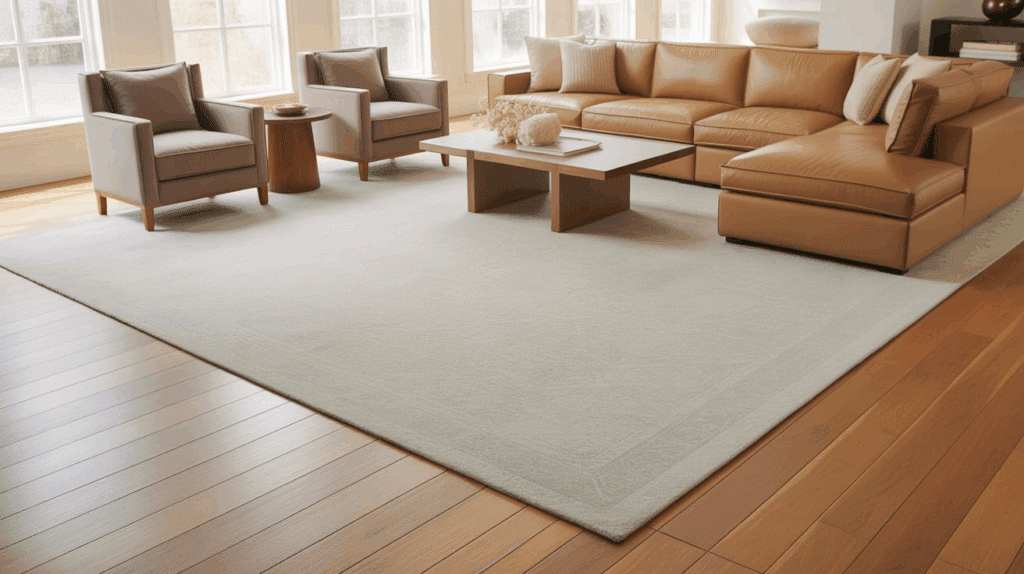
This layout works best for large or open living rooms. Place all furniture legs, including sofas and chairs, fully on the rug for a unified look.
It creates a defined seating zone that feels cozy and well-balanced. A 9×12 ft or larger rug usually fits this layout best. Leave a small border of floor around the edges to frame the space.
2. Front Legs on The Rug
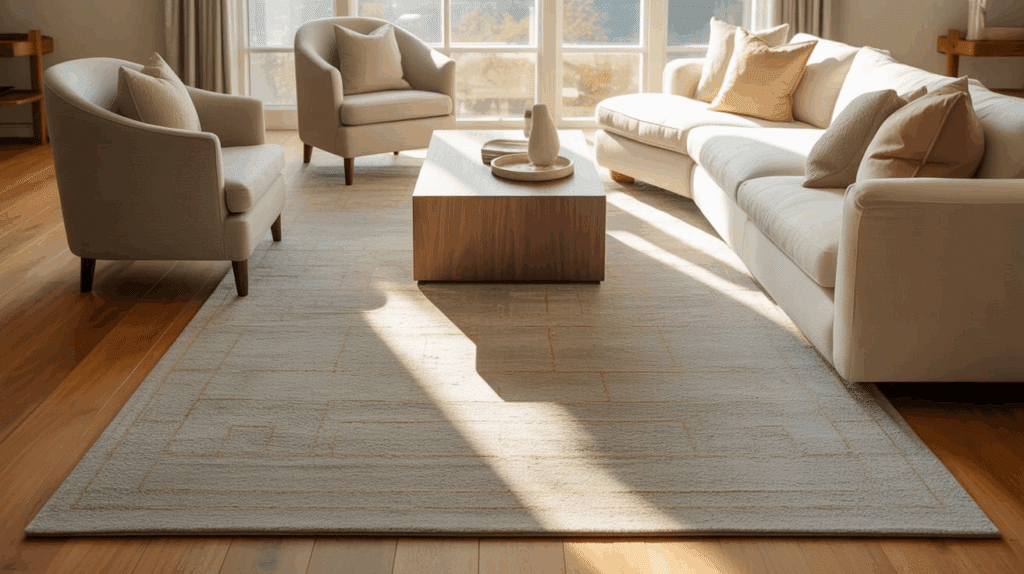
This setup is ideal for medium-sized rooms or when a full rug feels too large. Keep the front legs of sofas and chairs on the rug and the back legs off.
It visually connects furniture while allowing the room to feel open. An 8×10 ft rug often works perfectly for this layout. Make sure all front legs align to keep the design balanced.
3. Floating Layout with Clearance
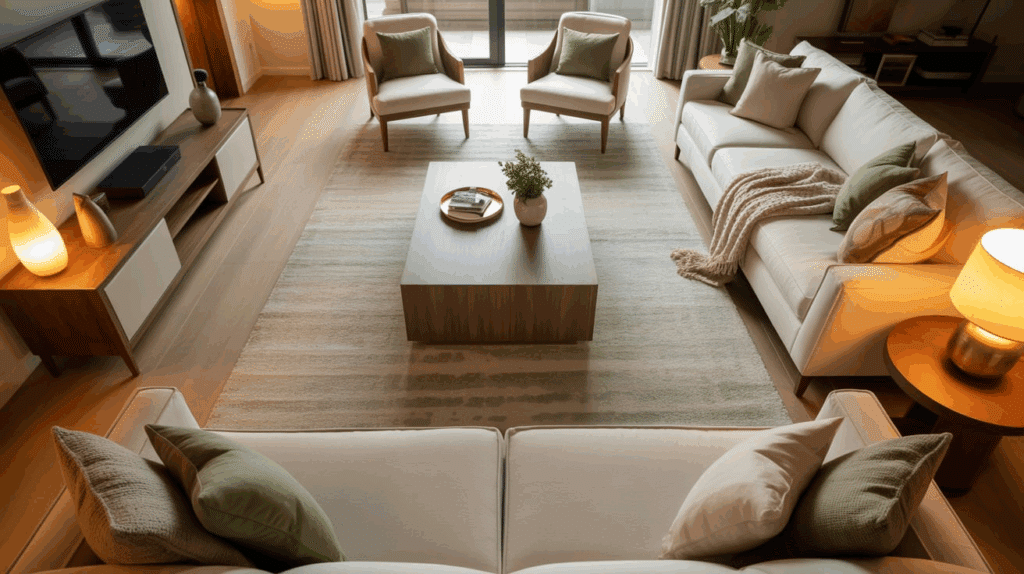
If your furniture sits away from walls, use a floating layout with equal rug space around all sides. Center the rug under your coffee table so part of each seat touches or nearly touches it.
This style works well in open floor plans or large living rooms. Choose a rug that fits the center grouping but still shows the floor beneath. It keeps the layout airy and relaxed.
4. The 12–18 Inch Rule

Leave about 12–18 inches of floor showing between the rug edge and the walls. This gives your room a clean border and prevents the rug from feeling too large.
Smaller rooms can use a 10-inch border for a snug look. Larger rooms look better with more open space around the rug. This simple spacing rule works for nearly every living room layout.
Choose Size by Room Width
- 6×9 ft: Works for small apartments or tight sitting areas.
- 8×10 ft: Fits most standard living rooms.
- 9×12 ft: Best for open layouts or rooms with large sectionals.
Rug Dimensions Ideas for Dining Room
A dining room rug should frame the table, protect the floor, and keep chairs steady when pulled out. The right rug size also adds warmth and helps the table feel centered in the room.
It’s not just about style; it’s about comfort and function when you’re sitting down to eat.
5. Leave 24–36 Inches Around the Table

Add two to three feet of extra rug space beyond each side of your dining table. This gives plenty of room for chairs to slide back without catching on the rug edge.
It also prevents uneven wear around the table. If your dining area is tight, aim for at least two feet of clearance. This small buffer keeps everything looking neat and easy to move around.
6. Rectangular and Oval Tables

For six- to eight-person tables, choose rugs that measure 8×10 ft or 9×12 ft. These sizes usually fit the table and chairs comfortably while leaving a clear floor border.
Oval tables follow the same rule, just center the rug evenly beneath the table shape. If you have an extendable table, size the rug for its longest length. That way, it still fits when you add leaves for guests.
7. Round and Square Tables
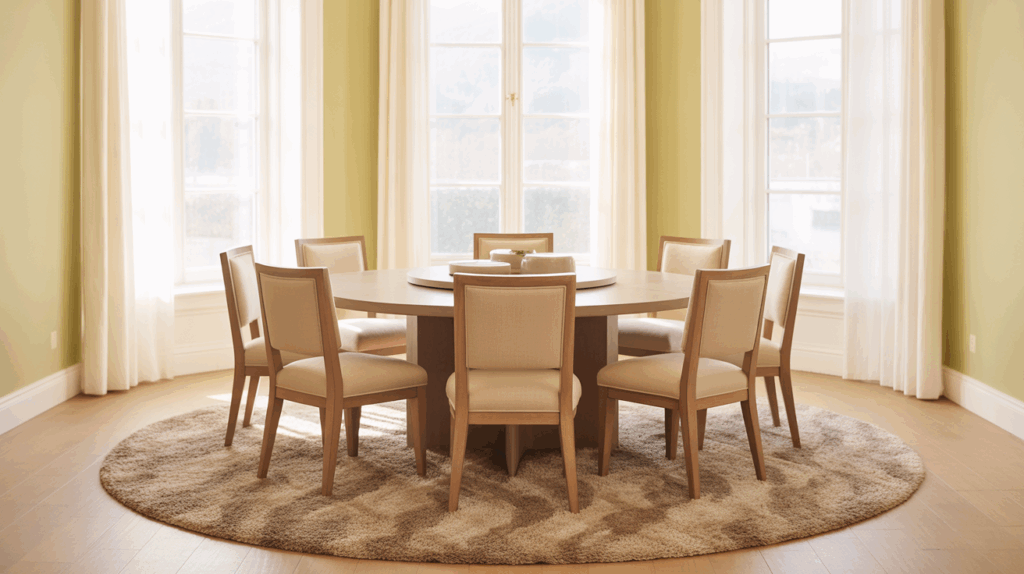
Round or square tables look best with rugs that match their shape. Use an 8-foot-round or 9-foot-square rug so the chairs stay balanced and centered even when pulled out.
A rug that mirrors the table’s outline helps everything look symmetrical. Make sure the rug extends far enough so chair legs don’t slide off when guests sit down. This gives both comfort and visual balance.
8. Use Low or Flat Pile Rugs
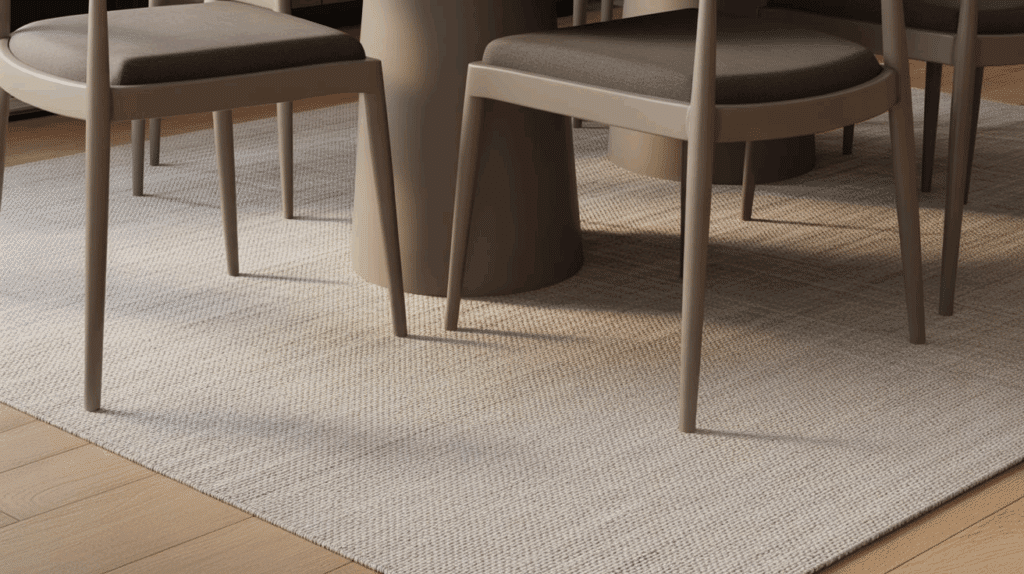
Choose flat-weave or low-pile rugs to make moving chairs easy and quiet. They clean up faster and don’t trap crumbs or spills as much as thick rugs.
This style is also safer because chair legs won’t catch or tip. Look for materials like wool-blend or synthetic fiber for easy maintenance. These options handle daily use and still look great over time.
Rug Dimensions Ideas for Bedroom
A bedroom rug adds warmth, comfort, and softness underfoot. It also helps reduce noise and ties the furniture layout together.
The right rug size can make your bedroom feel calm, balanced, and inviting from the moment you walk in.
9. Under-Bed Rug Layout

Choose a rug that fits both the bed and the surrounding floor space. For a twin bed, use a 5×8 ft or 6×9 ft rug; for a full or queen, try 8×10 ft; and for a king, 9×12 ft works best.
Center the rug under the bed so it extends evenly on both sides and a few feet beyond the footboard. This placement adds comfort when you step out of bed and visually grounds the entire setup.
10. Side Runners or 3-Piece Sets
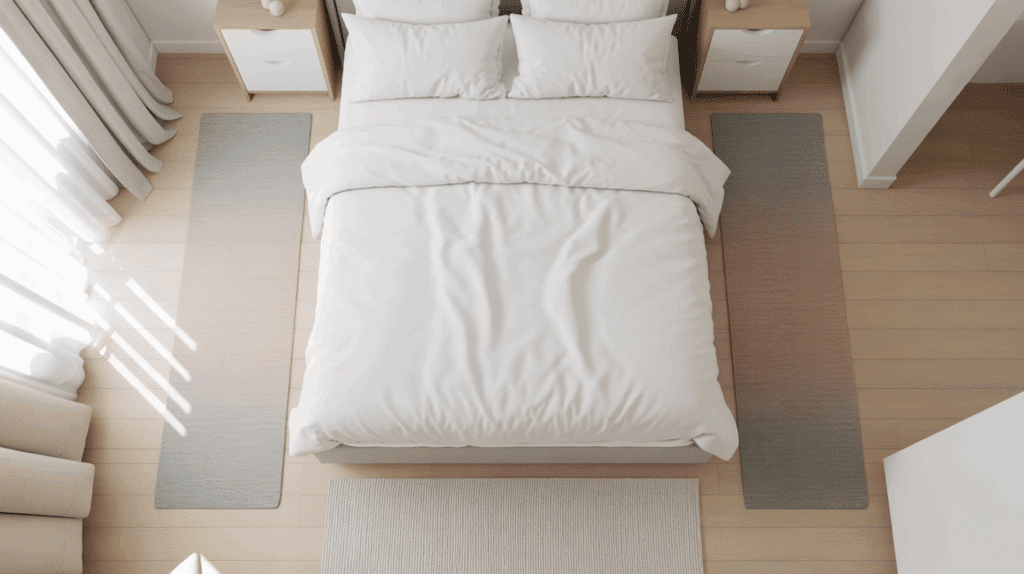
If you don’t have room for a large rug, use runners instead. Place one on each side of the bed and a small rug at the foot for balance. This setup leaves the center of the room open and easy to clean.
It’s also ideal for smaller bedrooms or shared spaces. You still get a soft landing for your feet without covering the whole floor.
11. Small Room Work-Around
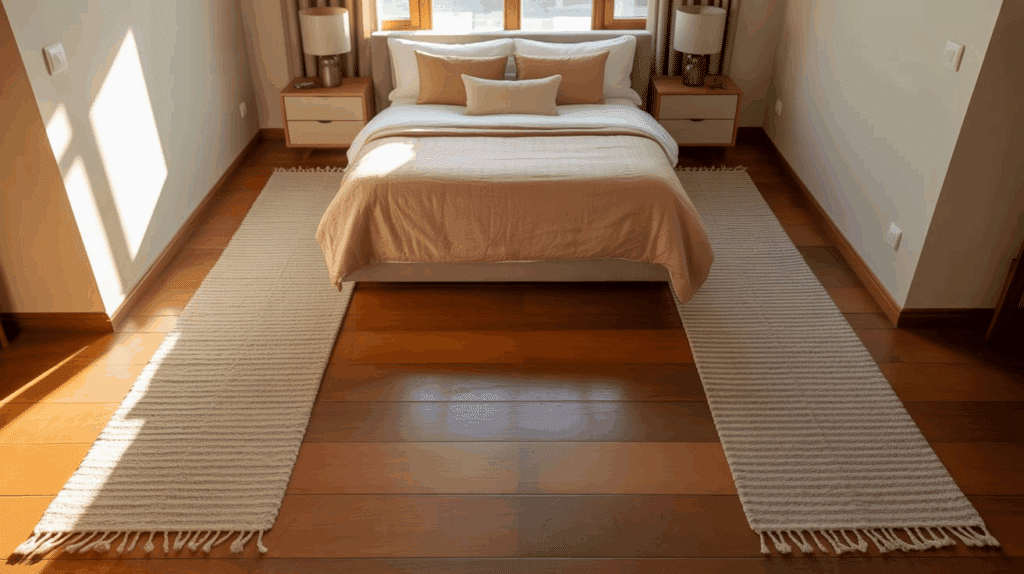
For narrow or compact bedrooms, skip a full rug altogether. Use two long runners along each side of the bed to bring in texture and warmth. It helps the room feel cozy without making it seem smaller.
Choose lightweight rugs so you can clean or move them easily. This simple trick adds comfort while keeping the layout open and airy.
Rug Dimensions Ideas for Kitchen, Entryway & Hallway
High-traffic areas need rugs that are durable, non-slip, and easy to clean.
12. Kitchen Runners
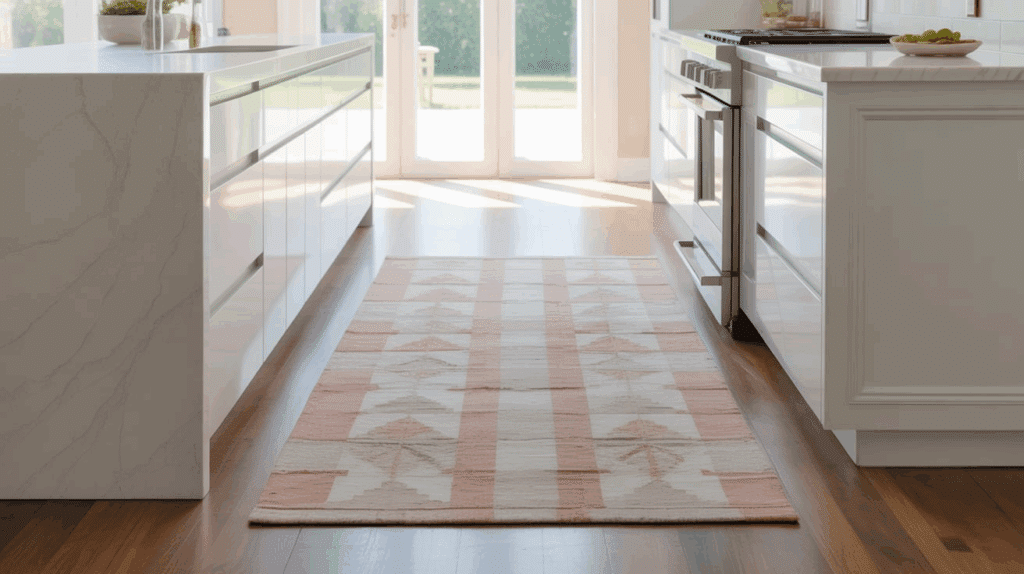
Common sizes are 2×6 ft or 2×8 ft, depending on your layout. Place runners along sinks, stoves, or main prep zones to cushion your feet while cooking.
Always use a non-slip pad underneath to prevent sliding. Washable or stain-resistant materials work best for kitchen use. A runner with a subtle pattern can also help hide everyday messes.
13. Entryway Rugs

Choose 3×5 ft or 4×6 ft rugs that let your door open and close freely. Look for low-pile or indoor-outdoor designs that trap dirt and moisture without holding onto it.
A durable rug pad keeps the mat in place even with constant foot traffic. Try darker colors or patterned designs to disguise wear between cleanings. The right entry rug instantly makes your home feel welcoming.
14. Hallway Runners
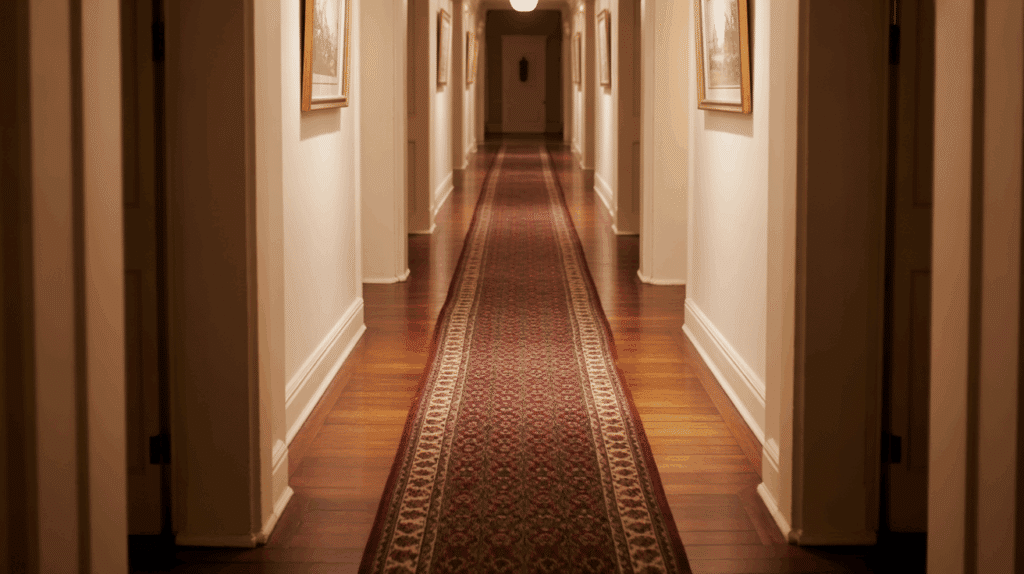
Keep about 4–6 inches of floor visible along each side of your runner to frame the hallway evenly. Pick a length that stops a few inches before each end of the wall or doorway.
Long, narrow rugs make tight spaces look longer and more open. Flat-weave or low-pile styles are easier to vacuum and won’t bunch up.
A hallway runner adds warmth and quiets footsteps in busy areas.
Rug Dimensions Ideas for Outdoor Spaces
Each space in your home has different rug needs depending on use, comfort, and how much traffic it gets.
In work areas, rugs need to be practical and sturdy, while in playrooms or bathrooms, they should feel soft and safe. The right choice makes these smaller spaces both functional and comfortable.
15. Home Office
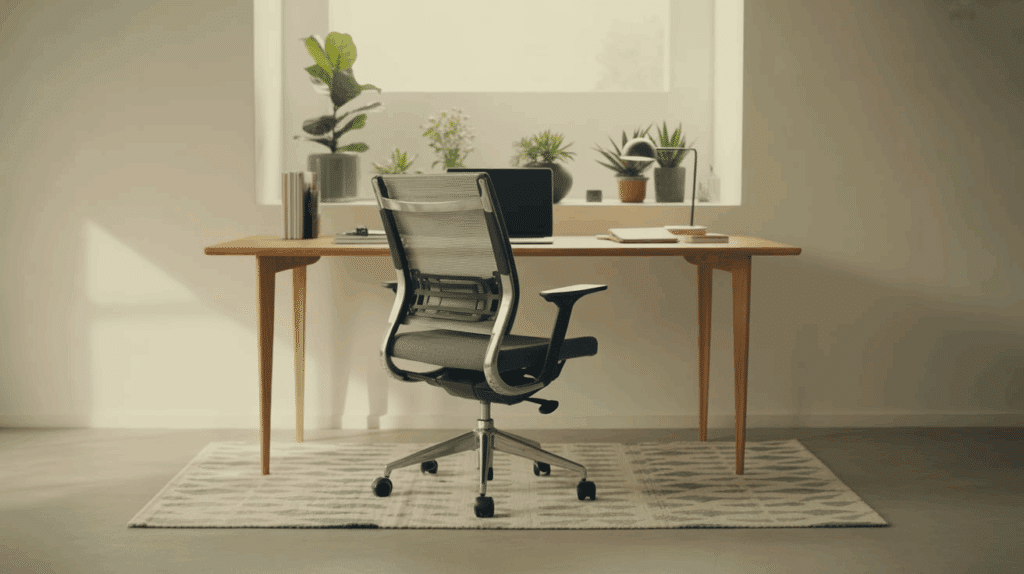
Pick a rug large enough to fit your desk, chair, and workspace comfortably. A low-pile or flat rug lets your chair roll smoothly without catching.
The rug should extend at least 18–24 inches beyond the desk to cover movement space. Choose durable materials that resist wear from office chairs and foot traffic.
A neutral color helps reduce distractions and keeps the area looking tidy.
16. Nursery or Kids Room
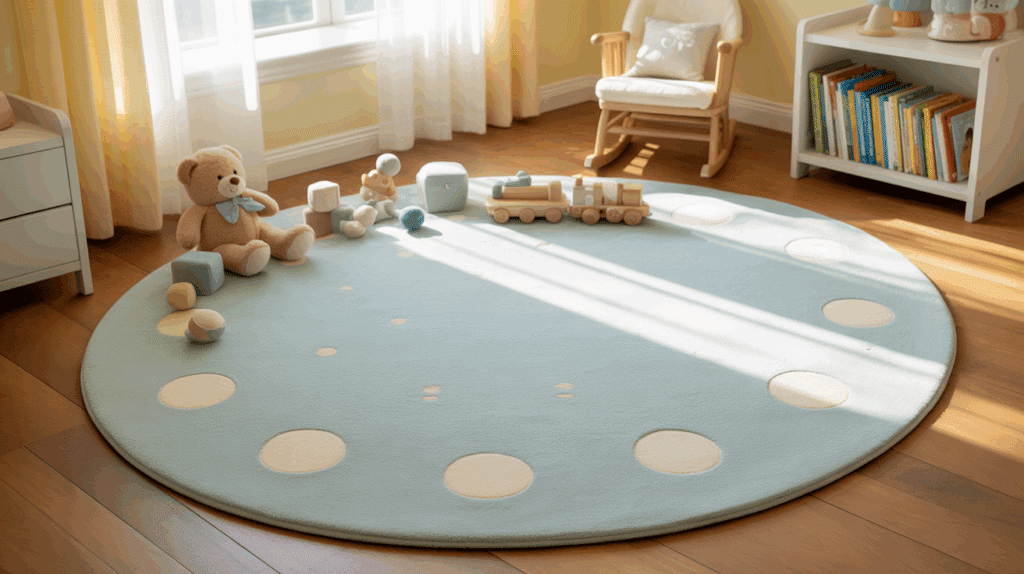
Choose soft, washable rugs sized around 5×8 ft or 6×9 ft to give plenty of play space. Round or oval shapes make the room feel fun and help soften sharp corners. Look for materials that are easy to clean and gentle underfoot.
A rug with a light texture or pattern can also hide small messes between cleanings. It’s a simple way to add comfort and warmth without fuss.
17. Outdoor Spaces
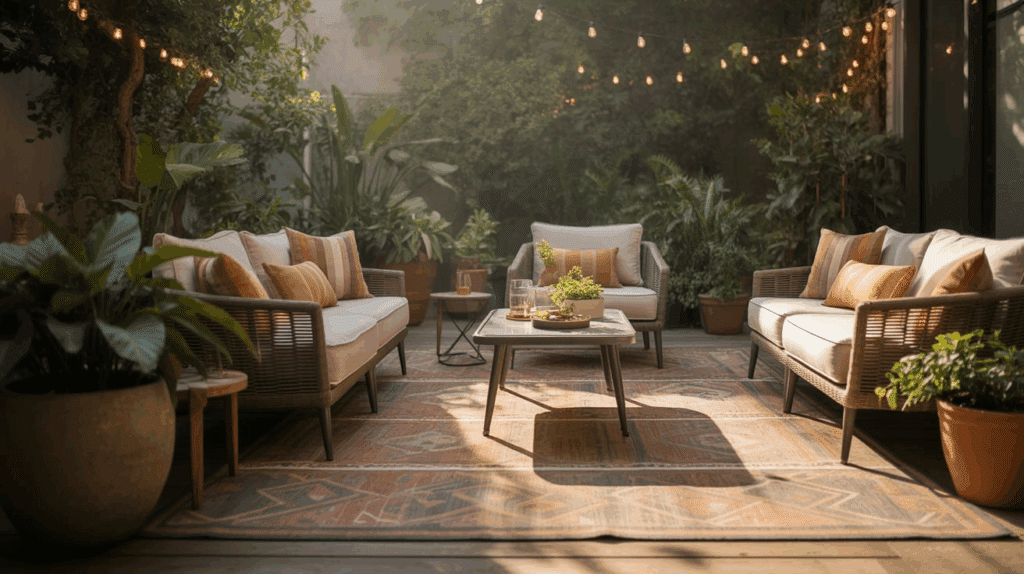
Select rugs made for patios, porches, or decks that can handle rain, sunlight, and foot traffic. The rug should fit under your outdoor seating set, with at least the front legs of each chair resting on it for balance. Weather-resistant materials like polypropylene dry quickly and resist fading.
Choose patterns that blend with outdoor furniture and landscape tones. An outdoor rug ties the space together and makes it feel as cozy as your indoor rooms.
How to Measure Your Space (Before You Buy!)
Before ordering, test the rug size right in your room.
- Measure the full floor area, including door swings and vents.
- Mark where your furniture will sit using tape or string.
- Outline your rug shape with painter’s tape to visualize size and fit.
- Step back and look from different angles to see how it feels.
This “tape-out” method helps you catch sizing mistakes before spending money.
Rug: Materials, Thickness, and Padding
The material and thickness of your rug affect comfort, cleaning, and how big it looks in the room.
- Low pile rugs: Great for dining rooms, offices, and hallways. They’re easy to clean, stay flat, and handle heavy use.
- High pile rugs: Soft and cozy, best for bedrooms or living rooms. They add warmth but need more care since they trap dust.
- Rug pads: Keep rugs from slipping and add a bit of cushioning. Choose a pad 1–2 inches smaller than your rug so edges stay smooth.
- Material tips: Wool feels warm and soft. Cotton is washable and light. Synthetic fibers like polyester or nylon handle traffic and spills well. Natural fibers such as jute or sisal add texture but don’t do well in damp spots.
Small Rug Sizes: Where They Work and Where They Don’t
Small rugs can look great in the right setting but may feel out of place in larger rooms. Use them thoughtfully to define small areas or add color and texture where you need it most.
| Placement | Recommended Sizes | Why It Works / Doesn’t Work | Tips |
|---|---|---|---|
| Entryway or Bathroom | 2×3 ft or 3×5 ft | Adds warmth and keeps feet off cold floors; easy to clean. | Choose washable or low-pile rugs that handle moisture. |
| Kitchen | 2×6 ft runner or 3×5 ft | Defines prep zones and adds comfort while standing. | Use a non-slip pad for safety near sinks and stoves. |
| Bedroom (Bedside) | 3×5 ft or 4×6 ft | Gives a soft landing spot and adds symmetry. | Place halfway under nightstands or beside the bed edge. |
| Living Room | 3×5 ft or 4×6 ft | Often too small; it makes furniture look disconnected. | Layer over a larger neutral rug to anchor the space. |
| Open Layouts / Large Rooms | Under 5×7 ft | Visually shrinks the space and breaks the flow. | Always size up or combine two small rugs for balance. |
Layering small rugs over larger ones adds depth and texture without overwhelming the space. You can also place two identical small rugs side by side for symmetry in long or narrow rooms.
When in doubt, size up slightly; it nearly always looks better and helps the space feel more balanced.
Common Rug Sizing Mistakes
Even a stylish room can feel off when the rug size isn’t right. Avoid these common mistakes to keep every space balanced and functional.
- Rug too small for furniture: Makes the room feel disconnected and unfinished. Always let furniture legs touch the rug.
- No space for dining chairs: Chairs should stay on the rug even when pulled out — add at least 24 inches of extra room.
- Wrong orientation: Match your rug shape to the layout. A rectangular room usually needs a rectangular rug.
- Skipping a rug pad: Pads prevent slipping, protect floors, and keep rug edges from curling.
- Rug pad too thick: Can make furniture wobble or cause trip hazards. Keep it thin and stable.
- Ignoring doors and vents: Rugs that block doors or cover vents wear out faster and look awkward.
Measure your space twice before buying. A few extra minutes with a tape measure saves time, effort, and frustration later.
Wrap Up
Now that you understand rug dimensions, you can pick the right size with confidence. You know how to measure, what layouts work best, and which rugs suit each room in your home.
I hope this guide helps you see how simple it can be to find a rug that fits both your space and your style. When your rug matches the room, everything just feels right; balanced, comfortable, and complete.
If you’d like more ideas or tips to make your home feel its best, take a look at my other posts for more easy inspiration.














